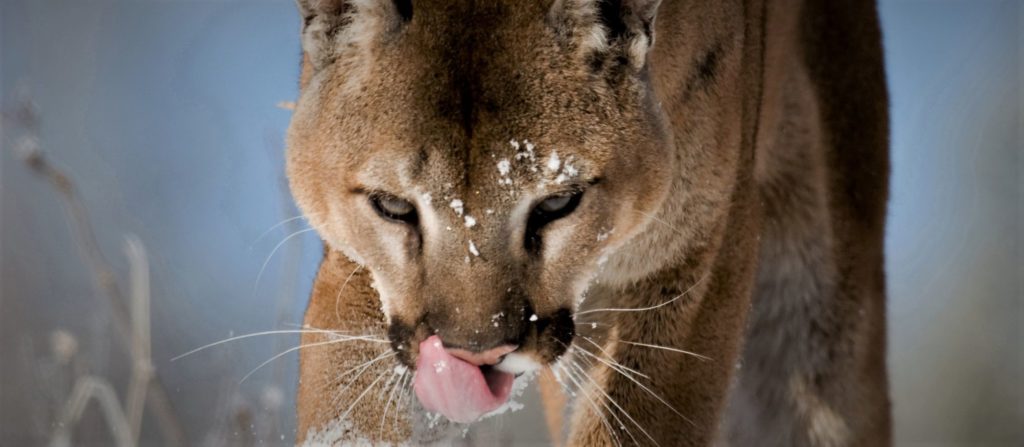
A male adult cougar can kill over 50 mule dear in a year.
SALT LAKE CITY – A male adult cougar will kill an average of one mule deer or elk a week and a female with kittens will kill one every three days said Division of Wildlife Resources Game Mammals Coordinator Darren DeBloois.

The Wildlife Board made changes to the cougar and bobcat regulations to adjust for changes in the big game herds in Utah.
“There are other variables like kill rates. In the summer, the deer will spoil quicker and cougars will kill more deer than the winter where they can eat on the carcass longer because it doesn’t spoil as quick when frozen,” he said. “If the deer herd is healthy and close to habitat that can support the mortality rate, it can be a good thing.”
The last couple of years the deer were stressed because of hard winters and a low food source has caused the deer population in the state to decline. That is the reason DWR is trying to reduce the cougar population.
“The cougar population has grown the last five to eight years,” he said. “The deer herds have declined.”
The Utah Wildlife Board approved a small increase for the regular cougar hunting permits compared to last year. They are also proposing an additional 27 permits in hunting units that aren’t implementing predator management plans.
“Our goal is to maintain a healthy cougar population within the current distribution of the species across Utah, while also considering human and livestock safety, and declines in populations of big game species that cougars prey on,” DeBloois said. “As part of this, we factor in a proportion of older age animals, breeding females and healthy cougars in the population.”
The cougar hunting units that have predator management plans in place will be open for unlimited year-round harvest. Twenty-five hunting units across the state will have predator management plans.

“The changes to the permit numbers adhere to legislation passed this year regarding cougar harvest and are also within the parameters established in the Utah Cougar Management Plan,” DeBloois said. “It will help ensure healthy cougar populations, while addressing local issues of concern, including impacts to specific prey populations, livestock depredation and maintaining cougar hunting opportunities across the state.”
There are not a lot of people that hunt lions, at least not as many has hunt deer. Last year DWR gave out 5,500 mountain lion tags.
“There has to be at least 5,500 hunters if we sold that many tags,” he said. “You kind of have to have dogs to be successful. It’s a little bit of a niche sport.”
DeBloois said dogs chasing lions helps them to be leery of humans, especially where people live.
“Cougar sightings have increased the last couple of years mostly because people have security cameras that capture them,” he said. “I think the cougars may have been there all along, but they are rarely seen.”
DeBloois said as the deer come to the benches along the Wasatch front the lions will follow them into town.
As with each wildlife species in Utah, cougars are managed according to guidelines established in a management plan, which includes regulated hunting. DWR biologists make determinations and gather input from hunters, individuals who don’t hunt, and livestock producers, who sometimes have sheep killed by cougars.
The board also made some adjustments in the bobcat management plan.
Utah’s bobcat management plan includes three categories for maintaining a healthy population: the number of juvenile bobcats harvested each year, the number of females harvested and a target survival rate for adults. Because two of the three parameters indicated a declining population, the board approved some slight changes for this year including the following:

- Reducing the number of permits per individual trapper from five permits to four.
- Maintaining the total number of available permits at 6,460.
- Shortening the bobcat trapping season. The season will run from Nov. 25 to March 1, 2021.
The plan is then finalized and approved by the Utah Wildlife Board. The current management plan was established in 2015 and expires in 2025. However, adjustments can be made as needed, depending on changes in cougar population numbers.

